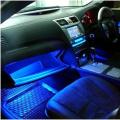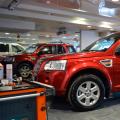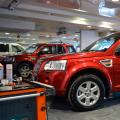Having searched the Internet for a topic on dampers for our car, I realized that there is a mountain of information and which one to trust is not clear. Who else did not put this one with USCHP, and without USCHP, and with EUR and GUR, and without EUR and without GUR.
0:354A week before installation, the rail was specially tightened, the rail behaves well - there are no knocks, there is a minimum of vibration on the steering wheel, the steering quality is excellent - this is without a damper.
0:656 0:796 1:1301General view of the damper kit
1:1358
Mayle double-sided shock markings 0260460161 under the Stinger sticker
2:2025
Such bolts are supplied together in a set - M8, the backlash in the bushing is visible to the naked eye
3:678
The bolts that we replaced are M10, there is no play in the bushing.
4:1277
Top - what is supplied in the set, bottom, what we put on both sides
5:1919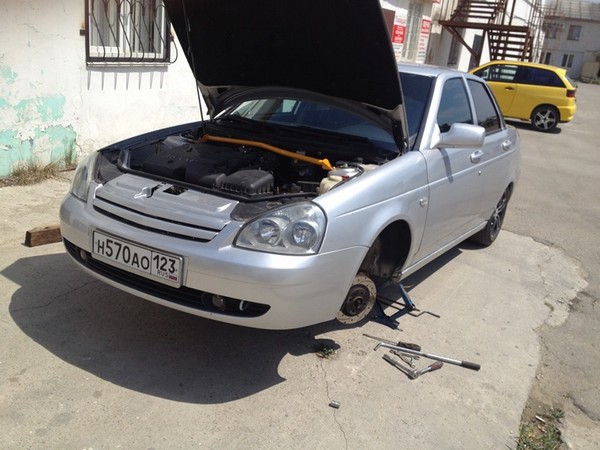
Swallow, dismantling the right ear of the USCHP for alteration
6:92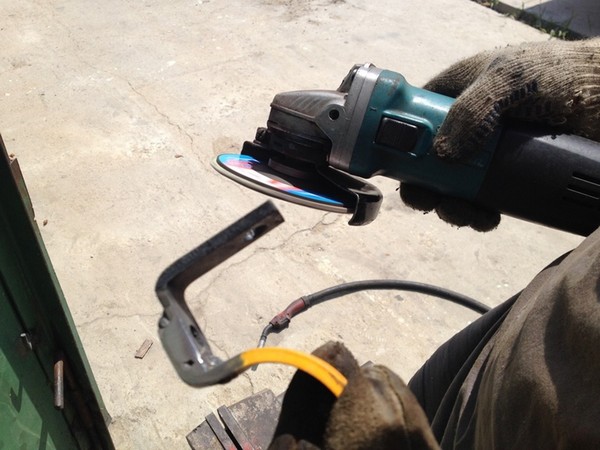
The welded part is sanded and painted
7:671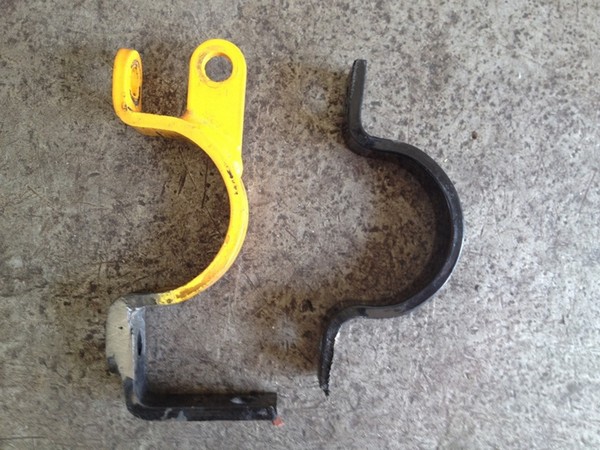
On the left - a converted ear, on the right, a Stinger ear with a cut off corner
8:1320
The type of the installed damper, which side to install, see for yourself, it is double-sided, the main thing is that the integral part is where there is something to hook, so as not to hook anything during the course of the damper
9:2187
Type of installed damper
10:560
The place where the damper is attached to the levers is poorly visible, but it is visible
11:1172Now on the shelves, using the materials Lada2111.рф:
11:1268Benefits:
It softens the impacts from the wheels on the steering wheel by 30 percent. This is especially felt when cornering on a bad road, when the hole is in the hole. Cracks on the asphalt are no longer felt, it passes gently through the tram rails (I confirm).
On the track, the car behaves like a monolithic projectile, and if any holes come across, then on high speed they are almost invisible (I confirm).
The suspension began to knock less (I confirm, but only the smallest overtones disappeared)
The vibration of the steering wheel goes away when braking, when the discs are curved, as well as at a speed of 100 km / h, when the wheels are poorly balanced. (I cannot confirm, since the balancing is normal, but with a strong crosswind and high speeds steering wheel, like a glove)
Disadvantages:
Perhaps there will be "wattage" in management (there is wattage, but it is so small that it can be neglected).
It became harder to turn the steering wheel, but not much. Some motorists did not notice such a difference at all (when the EUR is on, there is no noticeable difference at all, when the EUR is turned off over 60 km / h, the severity is approximately at the level of a re-drive car with a well-tightened steering rack, i.e. the norm).
Outcomes:
On my own behalf, I will add that when assembled, this mechanism (PP 3.1 revolutions, USCHP, Depfer) gives such a result that sometimes you forget that you are in a Russian car, I would never have thought that the feeling of a steering wheel changes the whole paradigm of driving in a car. pleasant springiness and heaviness in the steering wheel, makes the ride an order of magnitude more comfortable, and even more so in urban driving in mixed modes on squeezed asphalt and landing at -90 mm. I have not yet chosen the track. But I can say that steering stability appeared at speed and not the same as with a tightened rail and a well-made collapse, but something akin to business classes (reminded a bit of taxiing in Tiana with a power steering). the rail itself coped with the functions with a bang, but the RESULT from the installation of the damper is not ephemeral and you can feel it even on a new tightened rail with USP and all those who wrote that nothing is felt at 3.1 revolutions and very hard, those who wrote about emergency steering, which will not be clearly mistaken, on the contrary, emergency steering becomes clearer and more focused, with the possibility of a sharp return to the place. The result exceeded all my expectations, I definitely recommend it to everyone who wants to bring "foreign brands" to our state employees.
Negative point:
11:43· The set of Stinger fasteners, as well as the layout, are far from ideal - for example, the triangular fastening to the levers is made soundly, but not evenly and without widening the holes, the levers did not want to screw normally, the bolts "mowed". savings, and many bet with them, thinking that this is how it should be.
-Shock absorber Mayle 0260460161, how long it lasts is unknown, but the fact that this is not Bilstein is for sure, in order to reduce the cost of the kit as much as possible, the Stinger company puts them.
Many did not unsubscribe that when installing a triangular damper attachment to the levers, we remove the upper metal plate above the levers and replace it with the one that comes with the damper, but it is 1.5 mm thicker (but also stronger, which is good ), but in my case there was a displacement, most likely because of this, and the steering wheel when driving right now stands unevenly in the center. And this is hello wheel alignment with the steering adjustment. I do not exclude that such a detail is an exception and only I came across and, in general, we can that they did it wrong, but keep in mind.
11:1916Stinger does not provide any normal comments on this product, although if it did, perhaps it would be more widespread and widely known.
11:2203On the damper (clicks of the Prior's steering wheel, the noise of the Prior's steering wheel, the noise of the Prior's EUR):
Previously, before installing this device, I had a problem extraneous noise from the steering column space in the area of \u200b\u200bthe casing and the EUR, this poster on the forum www.lkforum.ru/showthread.php?t\u003d19480&page\u003d22 describes this problem very well (and a bunch of similar topics on the Internet to combat this clicking and crackling in the steering column space , for example www.priorovod.ru/showthread.php?t\u003d50964)
In general, recently, just when driving with a damper, I realized that these sounds disappeared from me, just the silence during rotation and that's it, and I thought that until I replaced the EUR assembly I would not get rid of it, because it was not a new rail, neither the USP, nor the new intermediate steering shaft did not help to get rid of this, but the EUR itself works normally and gives the effort. Perhaps many are looking for this information, here is one of the possible solutions to the problem.
https://www.drive2.ru/l/4228022/
11:1530 24059I'll start by saying that i do not have a power steering, the steering rack is stock.
For a long time I had planned to put an amplifier for the bulkhead (hereinafter referred to as USHP) and a steering rack damper, I bought it.
USCHP Technomaster 970 rubles. great quality, well welded and colored
Ready set: MEYLE damper with brackets 1500 rubles.
Damper from Mercedes, with brackets for the tenth family. Two bolts that are included, not in size, immediately for replacement.
The AlexGolf2 record of combining caught my eye USCHP Technomaster and stop of bulkhead AVTOPRODUKT.

Photo from a post where I saw a similar idea
I liked the idea, but spend 350 rubles. I'm not ready for a piece of iron in the form of a bulkhead stop AUTOPRODUCT, I take a suitable tube, a hammer and do the same

I weld the stop and the damper mounting bracket, paint (there was only red paint)

Two elastic bands under the rail brackets immediately for replacement (100 rubles). There is nothing complicated in installing the USCHP, the only thing is not convenient to turn the upper nuts, I also had to remove protective shield reiki, you need to refine it to get up without problems.



That's what I understand a rigid structure!
Everything is ready, you can install a damper, but no, I postpone the installation for a week in order to travel with one USCHP and understand what it will give.
What did the USCHP installation give with modification without a damper? I drove 200 km, mostly intercity.
1) The steering sharpness has increased
2) The bumps on the steering wheel when driving on a bad road at speed decreased slightly.
In general, only positive points
I put the damper

What has changed after installing the damper?
1) The effort on the steering wheel has increased slightly - not critical, it gets used to it.
2) At low speeds (up to about 70 km / h), the steering sharpness has disappeared, it is easy to check by a sharp turn of the steering wheel to go around an obstacle, for example a hole. A matter of habit, having already driven, now it is less noticeable, but the difference in the severity that was and is still present for the worse.
3) About the pleasant. I must say right away that the supernatural did not happen, I expected more, as always, but there really is a coming and I am satisfied with the result. The small tremor of the steering wheel subsided, but did not become equal to zero. On a good road, the steering behavior did not change, but on a bad road with pits and cracks, I got the feeling that the road had become better, the pits were smaller, although no one was going to repair the road. This is especially felt at speeds of 50 km / h. Indeed, the damper dampens shocks on steering rack, it became more pleasant to drive on a bad road.
Conclusion: the time and money spent are definitely worth it, but it's still a long way to a foreign car, driving on a rough road has become more comfortable. If you decide to install a damper, be sure to use the USCHP, otherwise the left mounting of the steering rack will not last long.
Good luck!
Not all car enthusiasts are aware of such a detail as a damper. This is due to the fact that it is not so widespread, because most drivers simply do not need it. The bulk of these devices are SUV owners. Today you will learn what a steering damper is, what it is for and how it is installed.
What is a steering damper and how does it work?
While driving over bumps road surfaceas well as off-road, the car's suspension receives various shocks and vibrations. All this is transferred to steering a vehicle that provides straightness of movement and the ability to correctly perform actions related to changing the direction of movement.
As a result of a sharp hit of the wheel in the pit, the suspension transmits vibrations to the steering gear, from where the vibration is transmitted to steering wheel... The driver receives a small blow to the hands and fingers and the steering wheel may suddenly slip out, which portends a change in direction. In addition, the owners of heavy SUVs during such impacts can get serious injuries to their fingers, which already calls into question the safety of further movement.
To avoid such problems, a device called a steering damper was developed. It is designed to dampen vibrations caused by off-road driving. That is why, in most cases, only SUVs are equipped with dampers.
The second purpose of the damper is to return zero to the zero degree position. However, this can hardly be called a plus, since if the car is not equipped with a hydraulic booster, it will no longer be possible to quickly maneuver using the steering wheel.

Such a damper is a shock absorber that is attached to one of the parts of the steering mechanism, and the other side to the body or frame. There are single and double acting dampers... In the first case, it can be additionally equipped with a spring that enhances its action. In this form, it has all the similarities with a car.
Dampers are made of high-strength material that can withstand very heavy loads without problems.
How to install a damper on a UAZ with your own hands + Video
Before installing the damper, it is necessary to clearly determine the need for this procedure. The fact is that during its installation, the controllability of the car will deteriorate sharply, so use it on conventional passenger cars Not recommended. The most suitable type of car may be SUVs, which most often find themselves in difficult road conditions... At the same time, it does not matter what type of control is installed on the car, whether it is a rail or a steering gear. Let's consider the principle of damper installation using the example of the UAZ 469 car.
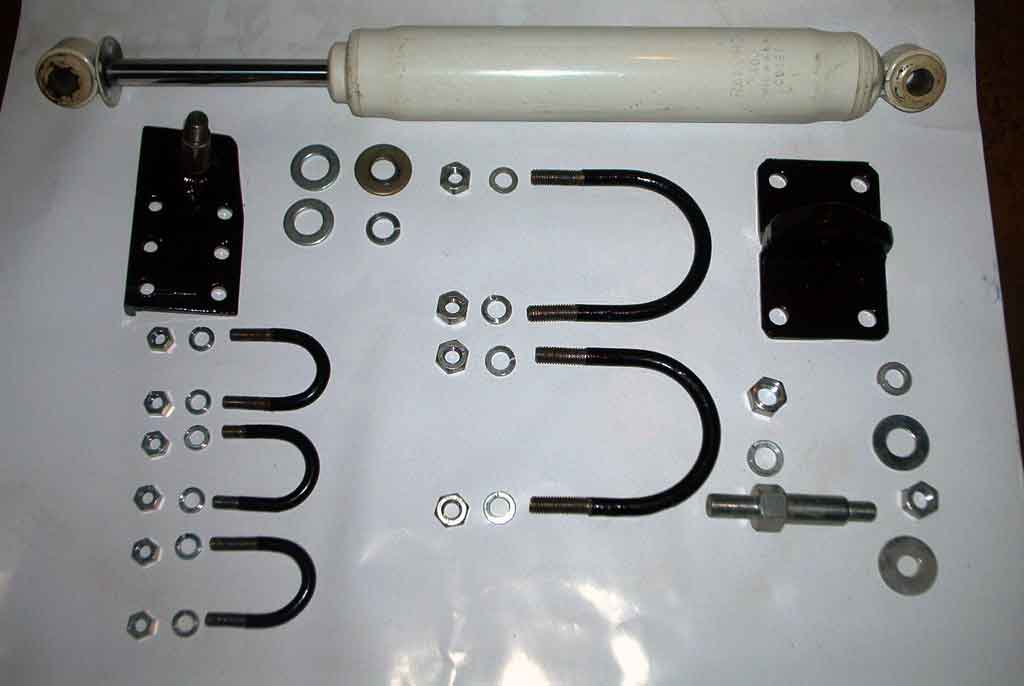
Before starting the installation, it should be borne in mind that the damper must be attached with one side to the steering rod of the car, and the other to the frame or body. Installation should be carried out taking into account that the steering wheel and wheels are straight, and the damper, after installation, could not independently "steer" the car in any direction. In addition, the damper should provide a free change in the position of the wheels relative to the vertical plane. That is, it should not restrict the steering angle of the vehicle.
Before installing the damper, it is necessary to make corners of thick metal and drill a hole in one of the sides corresponding to the damper fastener. Then weld one corner to one side of the bottom. The other corner is welded to the opposite side. After that, attach the damper to the corners. If the installation process is complicated, then the corners can be bent, but do not forget to return them to their original position, the corresponding position relative to the perpendicular to the damper.
If you do not have a good command of the welding machine, then you can fix the damper using special clamps, which have the appropriate fasteners.
This is how the steering damper is installed on the UAZ 469 car.
All the best ...
Climbing the block, I did not find a similar record, so I decided to write.
Today I will tell you about installing a damper on the steering rack.
Having climbed the site and read various articles and entries, I came across a very interesting article about installing a shock absorber from a measure on a steering rack. The reviews were only positive. Therefore, I decided to install this device myself. There shouldn't have been any difficulties with the installation, and the shock absorber is not so expensive.
Ordered on Exist-e Steering damper "FEBI". For one thing I bought an amplifier for the bulkhead "TechnoMaster". I know that there is no use from him, but as I wrote earlier, I love colored pieces of iron.
A drawing of the mountings was found on the Internet.
Fixture drawing
With the manufacture of a small mount combined with a bracket that holds the steering rack, there were no problems. I just straightened my own bracket, cut it to the desired length, drilled a hole for the shock absorber and welded together the made mount and the bracket from the amplifier.
But with a large mount, there was a difficulty in how to cut it out more or less figuratively. The solution was found quickly, I asked a friend of the welder to cut out a blank with a cutter. Well, I sharpened it a bit with a file. I drilled holes according to the drawing. The second mount is ready.

Shock absorber and large mount.
Before putting, I decided to paint. At the expense of the quality of the painting, I did not soar, I bluntly dipped it into a bucket of yellow paint, so small smudges are visible.

The mountings are painted.
There were no problems with the installation of the right bracket from the amplifier and center mounts. Everything unscrewed and spun easily.

Central.
Right bracket.
But I had to tinker with the left. I had to remove the spacer and the adsorber tank so that it could be pushed to the nuts. I barely unscrewed the upper nut with hard mats. The lower one somehow did not go straight away. And after a couple of strokes, we wrench the bolt to which the bracket is attached broke off. If I had time and did not get sick, then perhaps I would have replaced the bolt. But because of poor health, I decided to twist only to the top.
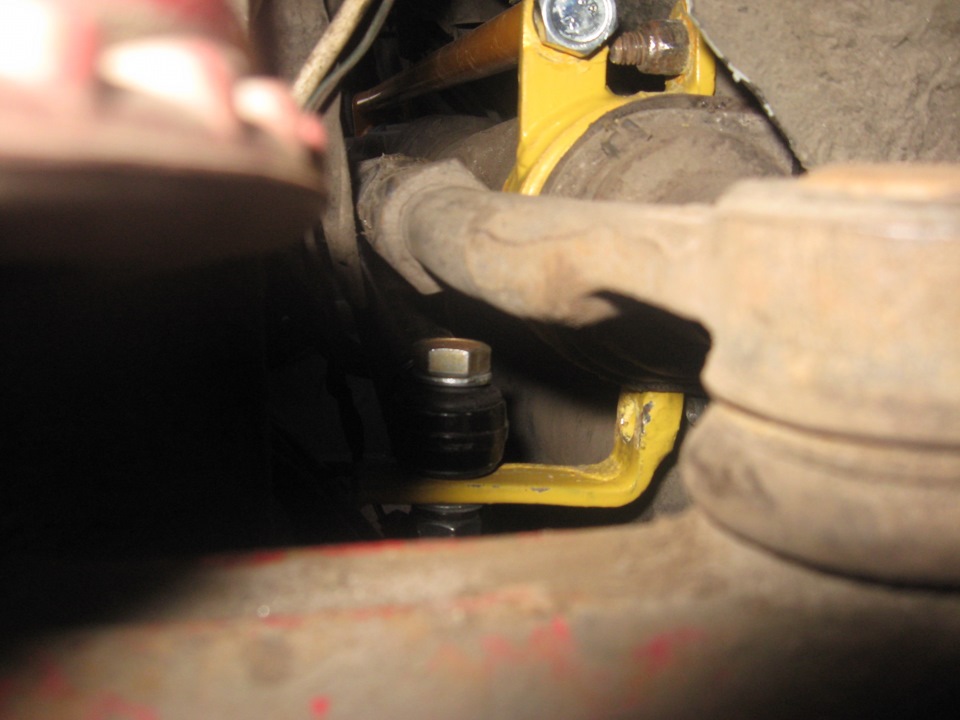
The left bracket is in place.

Chip bolt and redesigned bracket
I twisted the shock absorber and put everything that I removed in place. I was afraid that I would not make it home, the rail would fall off. But when he arrived home, he looked at the bracket, she was in the same position as she was. After recovery, I will insert a new bolt.
I cannot say anything concrete about the sensations. The steering wheel became harder to turn. It seems to have become more informative. He began to work out small irregularities in the road. I won't say anything else yet, there were no opportunities to check. And besides, the shock absorber must be worked in a bit.
If anyone is interested, then the catalog number 01261 .
Why are road irregularities not transmitted to the steering wheel on foreign cars the way they do on Russian cars? The steering wheel is made comfortable by the power steering, and sometimes in its absence - steering rack damper... What kind of device is this, what is it for and is it possible to install such a modification on a VAZ rail?
The purpose of the steering rack damper.
The damper is a conventional double-acting shock absorber that is placed on the steering rack between the rods and the rack housing. Such a steering damper is often installed on SUVs so that the steering wheel does not jump out of your hands when driving on an uneven road (stones, bumps, pits, etc.). Also, the rack damper is used on expensive rear-wheel drive cars, for example, Mercedes, and serves to improve directional stability.
Advantages and disadvantages of a steering rack damper.
The pros and cons of the rack shock absorber given below are based on feedback from the owners of the VAZ 2108-12 and Lada Priora cars.
Benefits:
It softens the impact from the wheels on the steering wheel by 30 percent. This is especially felt when cornering on a bad road, when the hole is in the hole. Cracks on the asphalt are no longer felt, it passes gently through the tram rails.
On the track, the car behaves like a monolithic projectile, and if any pits come across, then at high speed they are almost invisible.
The suspension began to knock less.
The vibration of the steering wheel goes away when braking, when the discs are crooked, as well as at a speed of 100 km / h, when the wheel balance is poor.
Disadvantages:
Perhaps there will be a "cottoniness" in the management.
It became harder to turn the steering wheel, but not by much. Some car enthusiasts did not notice such a difference at all.
p.s. after installing this revision, the steering wheel will, as before, return back after turns.
Conclusion
Whether or not you need such a steering rack damper, decide for yourself. There are many positive reviews, but some say that it makes sense to bother if you spend 70% of your time traveling on a bad road. On the other hand, everyone knows what roads are in Russia.
Attention! The damper is also compatible with the Tekhnomaster steering rack amplifier (LINK). This item not intended for installation on vehicles with power steering (GUR)!
Manufacturer: Tuning / standard:
Tuning detail
Applicability:Lada Kalina hatchback (VAZ 1119)
Lada Kalina station wagon (VAZ 1117)
Lada Kalina 2 hatchback (VAZ 2192)
Lada Kalina 2 station wagon (VAZ 2194)
Lada Granta sedan (VAZ 2190)
Lada Granta liftback (VAZ 2191)
Lada Priora sedan (VAZ 2170)
Lada Priora hatchback (VAZ 2172)
Lada Priora station wagon (VAZ 2171)
Lada Priora 2 sedan (VAZ 21704)
Lada Priora 2 hatchback (VAZ 21724)
Lada Kalina sedan (VAZ 1118)
Delivery options
Note!
Below are the shipping methods available for this particular item. Depending on the delivery method possible options fees may vary.
FROM detailed information can be found on the shipping and payment page.
Sending by Russian Post
Sending by Russian Post Class 1
Express parcel EMS
Transport companies
 | Available methods payment:
Delivery is possible in any localitywhere there is a representative office transport company... Delivery time - from 2 to 10 days. Sending oversized parcels is about 50% more profitable than Russian Post. |
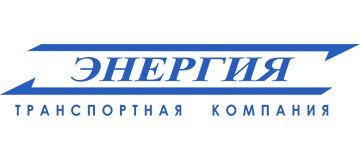 |
|
 |
|
 |
|
 |
|
 |
|
 |
|
 |
Courier delivery in Togliatti
Pickup from our warehouse
Installing a steering rack damper on a VAZ with your own hands
So, the shock absorber is attached to the rail, with one end to two tie rods bolts, which are in the middle of the rail. A powerful wrench is required to loosen these two rack rod bolts.



The other end of the damper is attached to the rail mount to the body from the side expansion tank... Install the second bracket, and tighten the bolts in reverse order.




Self-installation of the rail damper will take no more than 45 minutes.
If you are worried that this rail shock absorber will loosen the already frail rail mounting studs over time, then you can also install the bulkhead amplifier. However, to mount these two devices together, you will need to slightly change the mountings:


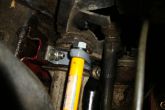
Have you ever felt a sense of tension on the steering wheel, as if it wants to turn in a different direction? Are there minor fluctuations in control? Any extraneous sounds when cornering? All signs can be the cause of steering column problems requiring direct service, as the mechanical parts of the steering are subject to wear. But don't worry if you notice any of these steering column problems. The main reason for dissatisfaction among motorists of domestic vehicles is the symptom of "difficult" steering wheel rotation, especially when driving at low speed.
Of all the parts in the parts, the suspension and steering parts take the brunt of the rough roads. Without proper proper maintenance small potholes become problems, catastrophic and costly. Diagnosing steering problems will allow you to respond more quickly to certain driving situations.
The most common symptom of suspension and steering problems domestic cars is the absence hydraulic system control and steering damper, resulting in unusually difficult control of the vehicle. Car "jumps" on bumpy tracks make the steering wheel twitch in the hands, no matter how tightly the motorist holds it. And this does not mean wear of the parts.
The steering rack damper can improve the smoothness of the steering and eliminate the vibration of the front axle. Many cars have left factories for more than 30 years without a steering damper. It's time to change the situation to normal for the driver!
The control damper, sometimes called the steering stabilizer, consists of a shock absorber that reduces the impact of shocks on the steering and prevents the small effects of existing bumps on the road, causing the steering wheel to shake and twitch. vehicle control.
Larger tires present a higher risk of kickback from the steering wheel, so the steering stabilizers are mostly on big cars, minibuses and SUVs. The result of the damper is improved handling and a smoother ride by absorbing vibration when large tires cause vibration in the steering wheel. The steering damper is usually located on the front passenger side in engine compartment front end vehicle, horizontally mounted chassis of the vehicle on a transverse steering rod.
Installing a steering damper on a car increases the value of the vehicle's maximum controllability.
Features of equipment auto steering rack damper:
- smoothness of the steering wheel when rotating in place;
- no signs of vibration when driving;
- reduced feeling of steering wheel shake;
- the exclusion of steering knocks on the hands with a sharp collision with hills and pits;
- reduction of tension in the hands when holding the steering wheel while driving;
- increased service life of the steering components.
Over its entire life, the steering rack damper is subject to rust and corrosion, wear and tear over long periods of use, especially if exposed to large amounts of dirt and road salt, causing hydraulic fluid to leak, reducing the damper's effectiveness.

